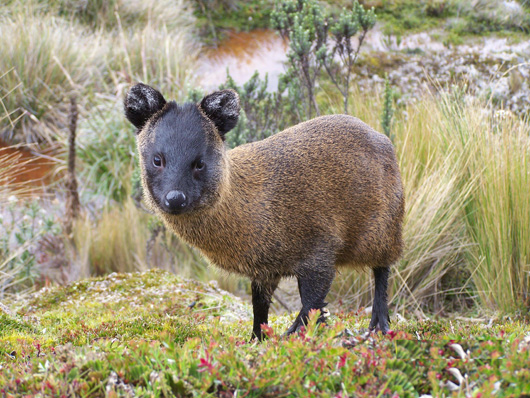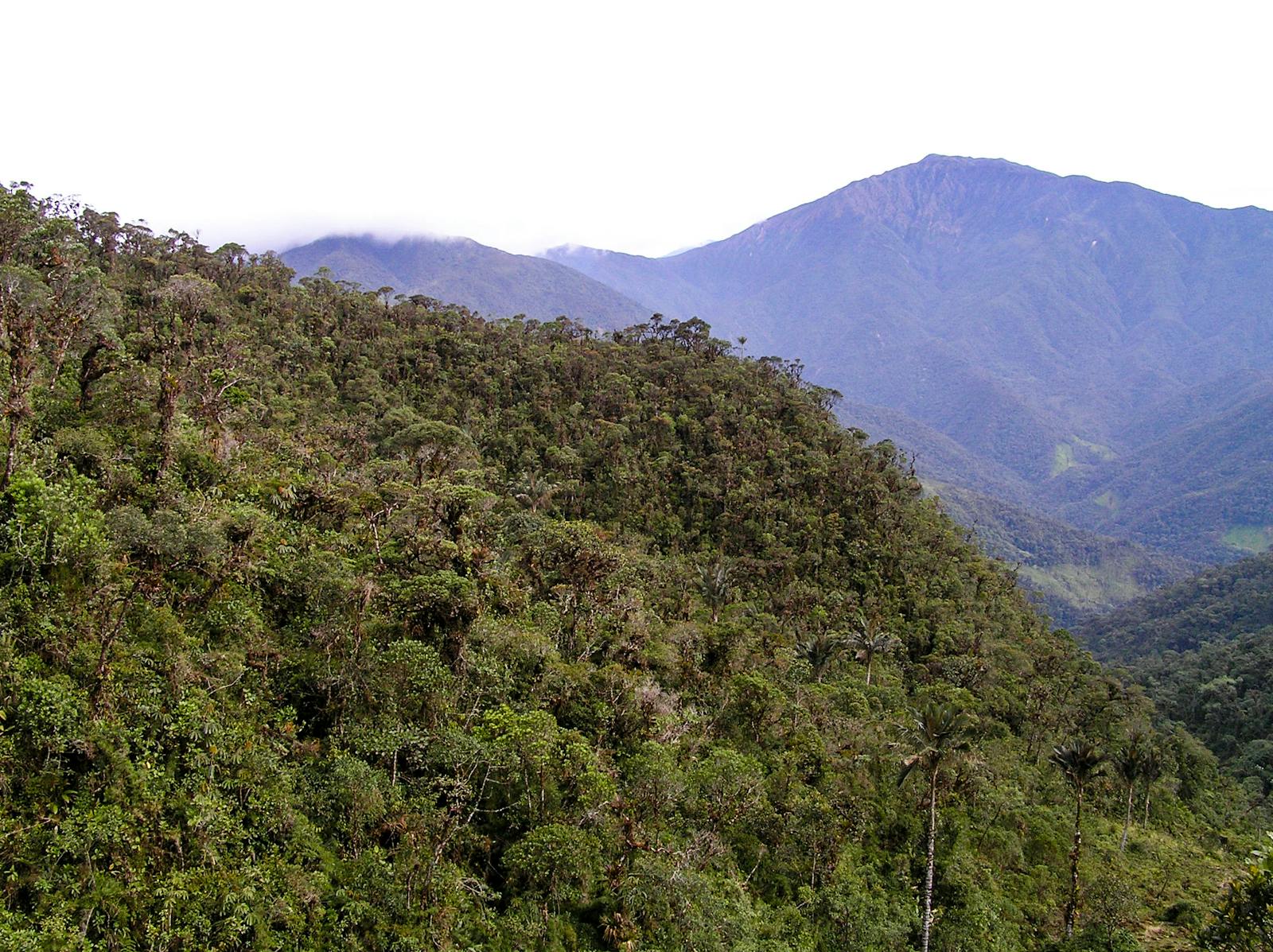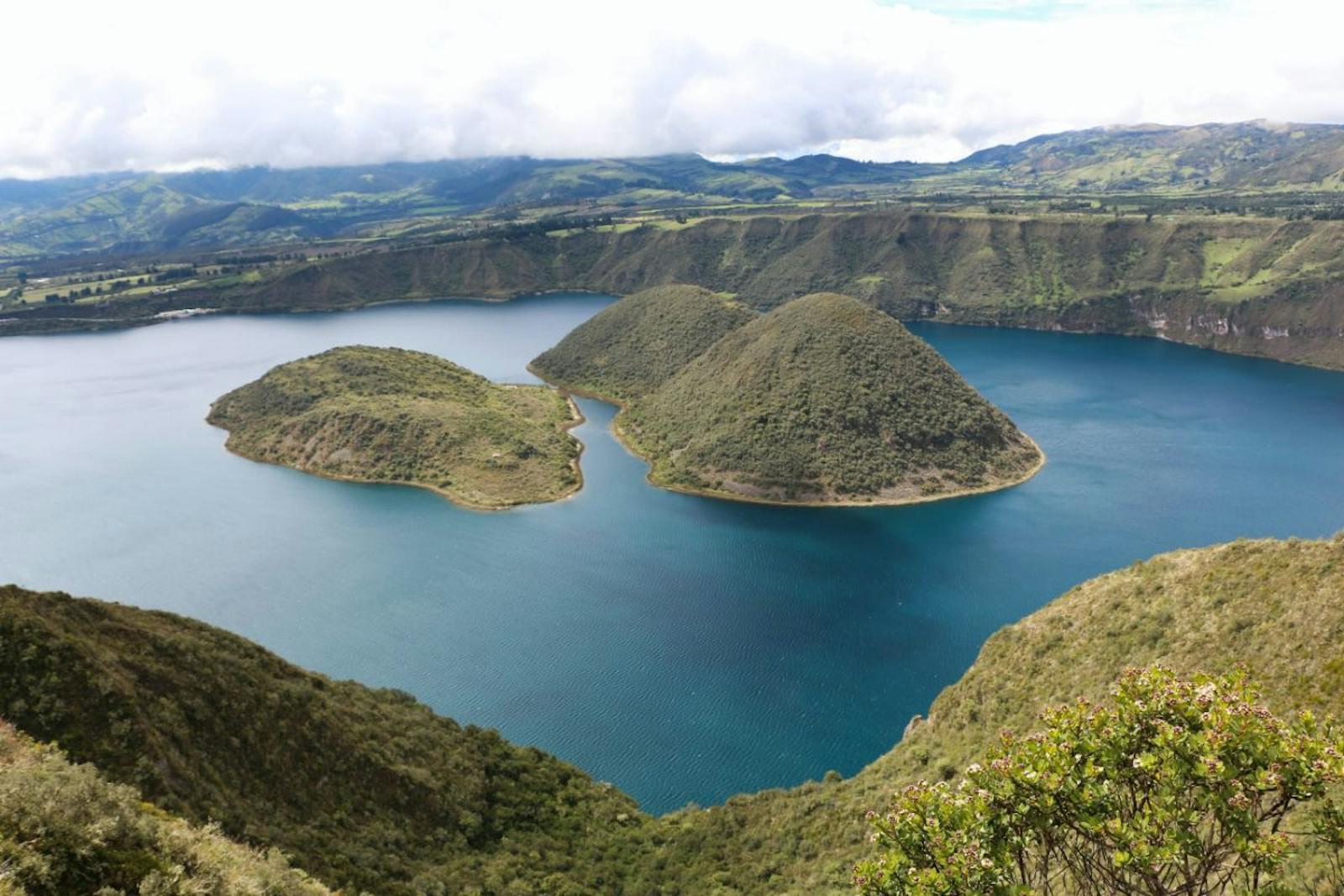Northwest Andean Montane Forests
The ecoregion’s land area is provided in units of 1,000 hectares. The conservation target is the Global Safety Net (GSN1) area for the given ecoregion. The protection level indicates the percentage of the GSN goal that is currently protected on a scale of 0-10. N/A means data is not available at this time.
Bioregion: Andean Mountain Forests & Valleys (NT11)
Realm: Southern America
Ecoregion Size (1000 ha):
8,135
Ecoregion ID:
486
Conservation Target:
87%
Protection Level:
2
States: Colombia, Ecuador
The Northwest Andean Montane Forests ecoregion is one of the most biodiverse ecoregions on the planet. The distinct formation of the Andes Mountains and glacial period of isolation has forced plant and animal communities to adapt to distinct isolated habitat areas. In the elfin, cloud, and montane forests of this ecoregions lives the world’s smallest deer, the northern pudú. Slightly larger than a cat, they average 80 cm long and weigh in at only 3–6 kg.
Being small allows the pudú to move about unimpeded in the dense, mossy, cloudy forests that in some areas are only a few meters tall. These unusual looking furry deer seek refuge in bamboo thickets to avoid detection of pumas and other predators that share these high Andean forests.

The flagship species of the Northwest Andean Montane Forests ecoregion is the northern pudú (Pudella mephistophiles). Image credit: Wikabyel, CC by-SA 4.0
The Northwestern Andean Montane Forests ecoregion is found in northwest South America in the center of Colombia and Ecuador within a 150 km wide chain of the Andes Mountains. This ecoregion can be divided into at least three different life zones: pre-montane, montane, and upper-montane forests. Rainfall averages between 2,000–4,000 mm/year, but may drop to 1,000–2,000 mm at higher altitudes. Species richness decreases with elevation, as does the height of the canopy in these montane forests.
Pre-montane and montane vegetation types combine, and are referred to as sub-Andean forest, which occurs from elevations of about 1,000–2,800 m. Here trees reach heights of 25 m or more, and many endemic species are present. Some characteristic species included dragons blood and glory bush. Upper montane or cloud forest ranges from 2,800–4,000 m. This forest type ends with the treeline where alpine tundra grasslands begin.
This elfin forest is characterized by its shorter trees with twisted limbs; creating a very dense forest where trees grow to 15–20 m in height and are well adapted to high humidity and steeply angled slopes. Certain families such as aroids, bromeliads, melastomes, epiphytes, orchids, and many groups of ferns reach their greatest diversity and endemism in the Andean cloud forests.
As the Andes Mountains stretch north to south from the equator, species dynamics are affected by sensitivity towards climate, altitude, slope, and natural barriers to rain and wind currents. In fact up to 50% of the plants found here are thought to be endemic. Endemic flora such as hammock fern, the endangered Colombian walnut, and verbena are just a few examples. The lower montane forests on the eastern flanks of the Andes are among the most diverse floristically in the world due to the amazing diversity of epiphytes, mainly orchids and aroids, which thrive in these forests.
Mammals of significance include spectacled bear, northern pudú, jaguar, and mountain tapir; they are all at risk due to hunting and habitat loss. This entire ecoregion falls within Endemic Bird Areas that contains restricted range, and endemic species include the greyish piculet, apical flycatcher, black-and-gold tanager, among others.

Colorful puffleg. Image credit: Courtesy of Franscesco Veronesi
The majority of the remaining forest areas consists of patchy remnants in between farmlands or fragments clinging to inhabitable or unworkable steep slopes. The remaining forests are threatened by farming, mining, lumber, and oil pipeline access roads. The main cash crops which drive people to convert forest into farmlands are coffee, sugar, and potatoes.
A highly controversial pipeline that runs through Ecuador and Mindo-Nambillo Reserve is a threat due to potential oil spills and colonization. Copper and gold miners have begun to explore and extract in the region, ploughing down forests in their endeavors. The Ministerio de Medio Ambiente replaced the Park service in Ecuador and is a poorly funded institution and have poor record keeping.
Priority conservation actions in the next decade.
- Ensure sustainable practices are followed by local inhabitants living within parks.
- Reclaim or revoke subsurface rights from oil and mining companies to regulate unsustainable exploration and extraction.
- Improve protected areas effectiveness and enforcement by providing sufficient resource and support.
-
-
1. Klein, B., C. Locklin. 2018. Western South America: Northwest Colombia to southern Ecuador. https://www.worldwildlife.org/ecoregions/nt0145. 8 August 2018.
2. Stattersfield, A.J., M.J. Crosby, A.J. Long, and D.C. Wege. (1998). A global directory of Endemic Bird Areas. BirdLife Conservation Series. BirdLife International, Cambridge, U.K.
3. Davis, S.D., V.H. Heywood, O. Herrera-MacBryde, J. Villa-Lobos and A.C. Hamilton 1997.Centres of Plant Diversity: A Guide and Straregy for their Conservation:Volume 3, The Americas. IUCN Publications Unit, Cambridge, U.K. -
Cite this page: Northwest Andean Montane Forests. Ecoregion Snapshots: Descriptive Abstracts of the Terrestrial Ecoregions of the World, 2021. Developed by One Earth and RESOLVE. https://www.oneearth.org/ecoregions/northwest-andean-montane-forests/
-




